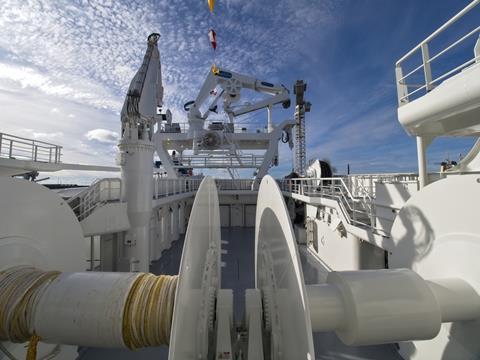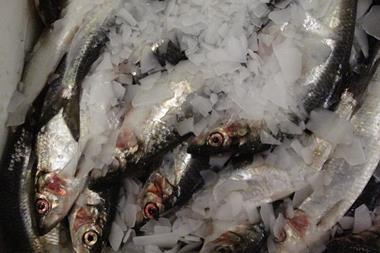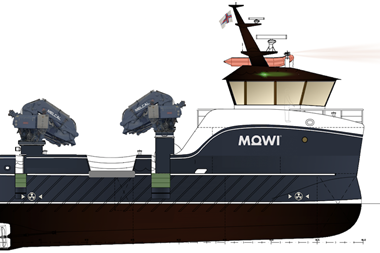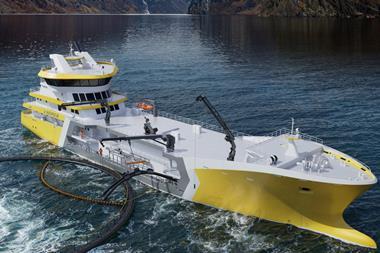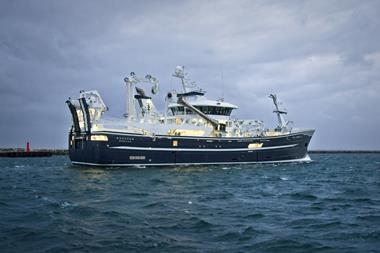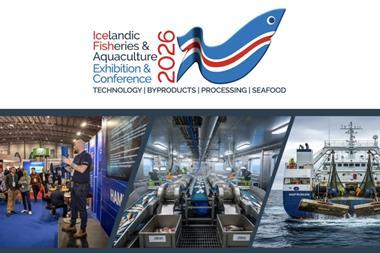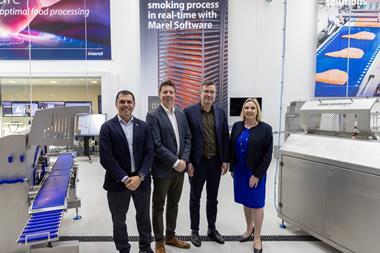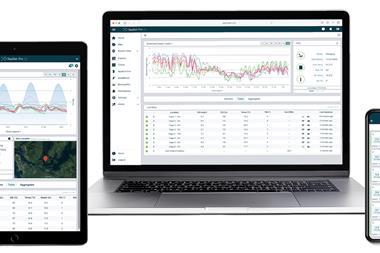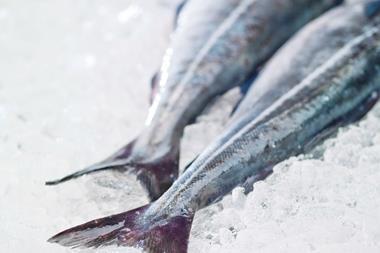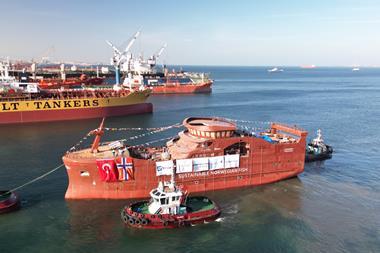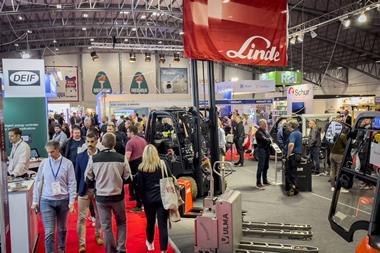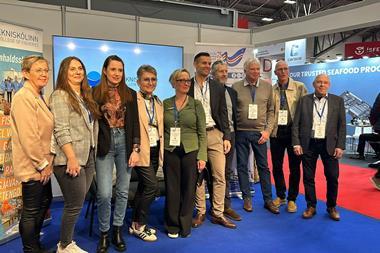With its new vessel, Gjögur has followed the trend away from processing at sea – new Hákon is a pelagic trawler/purse seiner with purely RSW capacity. The newbuild is one of a pair of identical vessels for owners in Iceland ordered from the Karstensen yard in Denmark. Its sister vessel is being built for Hornafjörður company Skinney-Thinganes.
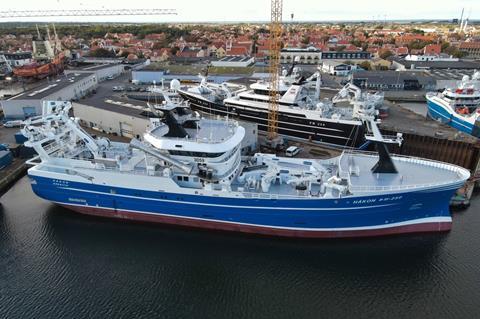
The 75.4-metre LOA, 16.5-metre breadth Hákon sailed from the Karstensen yard in Skagen in October last year, but its delivery trip was interrupted with a stopover in the Faroes to deal with an engine problem. It sailed for its first fishing trip after a brief call in Reykjavík.
Built to the yard’s own design, and with the hull fabricated at Karstensen Shipyard Poland in Gdansk, Hákon was brought to the Skagen yard for outfitting. The design and layout were finalised in collaboration with both Gjögur and Skinney-Thinganes to develop a pelagic vessel with a 2,500-cubic-metre capacity in 13 RSW tanks, and optimised for catch quality and operational economy, as well as crew comfort.
SeaQuest package
The deck is laid out with a pair of side-by-side net drums offset to port and aligned with the hydraulic stern gates for handling trawl gear. The recessed purse seine bin is on the starboard side.
A full package of deck machinery has been supplied by SeaQuest Systems, with a pair of 91-tonne trawl winches managed by a SeaQuest auto-trawl. The two net drums each have an 110-tonne pull and the setup is completed with a 57-tonne tail end winch, a 20-tonne end-wire winch and a net-sounder winch mounted on the aft gallows.
The purse winches are 40-tonne units, backed up by a pair of 16-tonne auxiliary purse winches. The purse seine handling arrangement has a 40-tonne net-hauler, a net-stacker crane mounted on the aft gallows, plus both floatline and groundline stackers.
Its two fish pumps are 20-inch hydraulic units from SeaQuest, supplied with hose and fish hose reels. Hákon has a 4t/18m crane forward, and a 3.5t/13m crane aft to deploy the fish pump at the stern. SeaQuest also supplied the two complete high-pressure hydraulic drive systems, one for the winches and cranes and the other for the fish pump and associated equipment.
Power considerations
Catches are pumped from the gear to the separator on the foredeck and from there are routed to the selected RSW tank/s. These are chilled using a double PTG FrioNordica system, each of which has a 1,300kW/1,118,000kCal/hour capacity, with two 960-cubic-metre/hour circulation pumps and two 260-cubic-metre/hour condenser pumps. C-Flow supplied the vacuum system with two 4,200-litre tanks.
Accommodation has been outfitted by Maritime Montering and is divided across a number of levels, with four en-suite cabins, laundry and gym at main deck level. There are five cabins plus a sick bay at the shelterdeck level, along with the changing room and oilskin store. The mess room, galley, provision space, day room and TV lounge are located at lower boat deck level, while there are four officer cabins at upper boat deck level.
Hákon’s propulsion system is a Wärtsilä package, with a 5,200kW 8V31 main engine driving a 4,000mm 4G1005 propeller via the SCV95-PDC58 reduction gearbox with a PTO for the Marelli shaft alternator.
The thinking behind the energy arrangement follows a standard Karstensen pattern, with the PTO clutched in to provide electrical power while handling the fishing gear, on the premise that while the winch system requires full power, there’s not the usual demand on the main engine for propulsive power. This enables the main engine to be the primary energy source for both propulsion and the deck systems.
While towing, the shaft alternator can be de-clutched and the vessel’s electrical power requirements can be met by the 940kWe and 565kWe Caterpillar gensets which connect to the main switchboard, controlled by the DEIF power management system.
The propulsion arrangement provides the option of a take-me-home system, using a clutch between the main engine and the gearbox, and the shaft generator used as an electric propulsion motor, powered by the two gensets.
The electrical power system is fitted for sliding frequency (60-50 Hz), by means of frequency converters for 400/440 V and UPS clean power static supply/converter for 230V. This allows the main engine and propeller revolutions to be reduced by 17%.
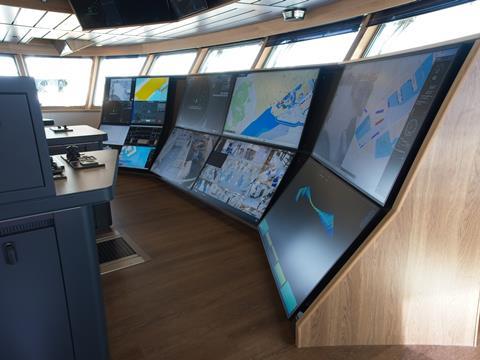
Wheelhouse comfort
Hákon’s wheelhouse has a pair of Nor-Sap 1600 chairs facing a Sónar monitor matrix of eight monitors displaying feeds from the electronics supplied by Sónar, Simberg and Marport, installed by KS Elektro. The sonars are all Simrad equipment, with low-frequency ST-94, medium-frequency MF-90 sets, plus an SN-90 bow sonar, as well as the FS-70 trawl sonar. There’s also a WASSP 160kHz 3D sonar and the main echo sounder is a Simar ES-80.
The current indicator is from JRC, while the net monitoring system is from Marport.
In addition to the JRC ECDIS, there are Olex 3D and MaxSea Time Zero chartplotters. The radars, GPS, AIS and GPS compass are all JRC systems, and the gyro compass and autopilot are from Simrad. Hákon has two Starlink satellite communications systems, a Sailor GMDSS A3 installation and Intellian Sat-TV.
